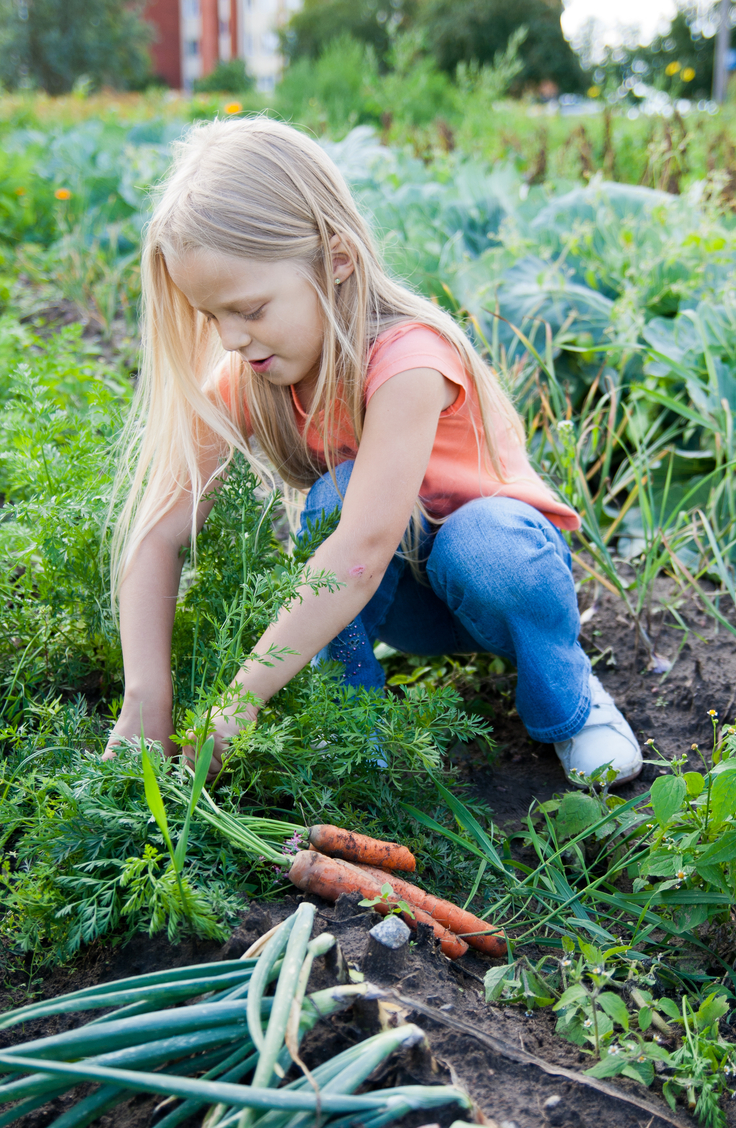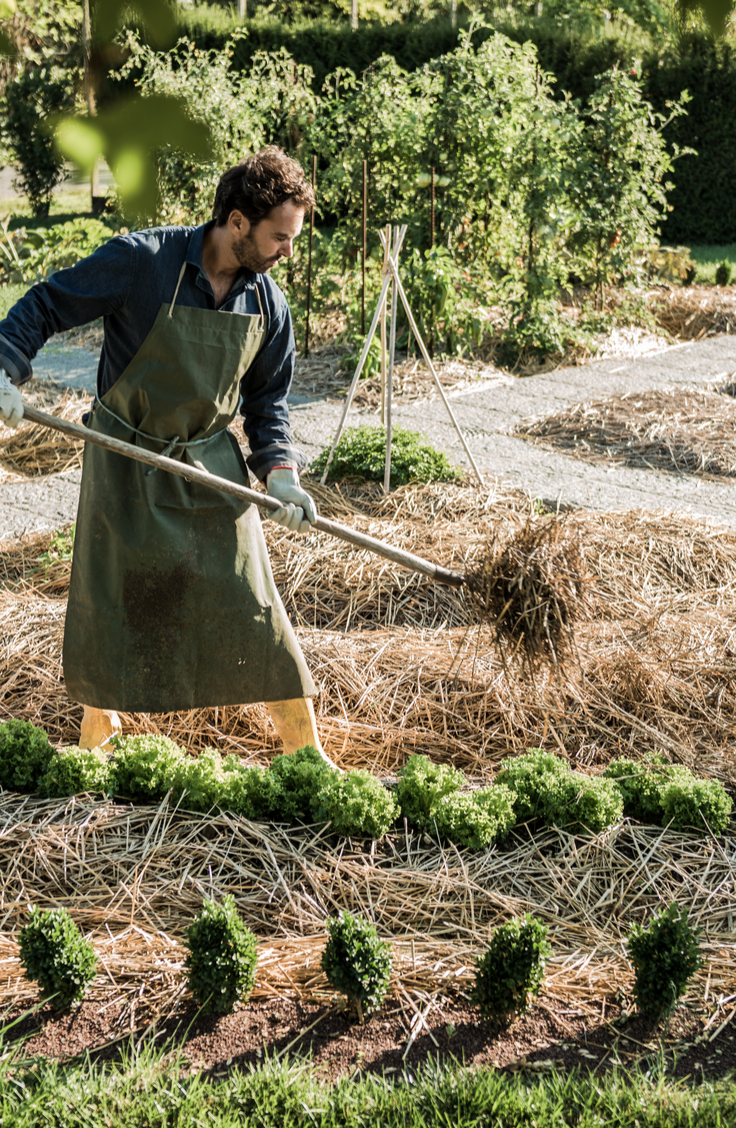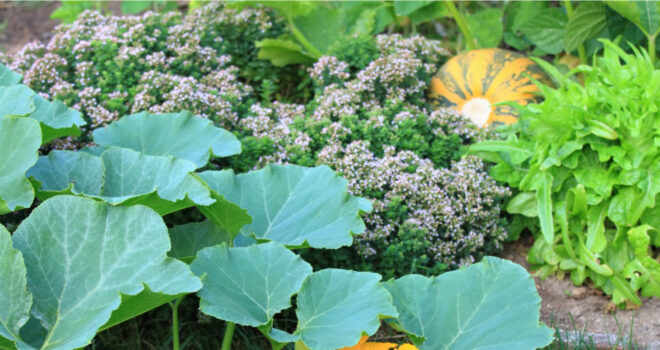Permaculture is the art of creating living spaces and functional territories, of trades and lives that are both meaningful and inspired by nature. It also involves taking care of people, our planet and sharing its resources equitably. But it also involves a lot of other things, that many people are not aware of.
1. Permaculture: a global method
Permaculture does not just mean creating a nice habitat for birds and the flowers. If you study the history of birds and flowers, however, you will soon realise what a vital contribution they made to the development of humanity! Permaculture is a comprehensive method that installs and develops resilient (that can resist abrupt changes/shocks) and sustainable systems, capable of meeting people’s needs, while imitating nature’s strategies.
It is not a static method, but a “mode of action”, which takes due consideration of every ecosystem’s biodiversity. It strives to develop a sustainable agricultural production, that is very energy-efficient and respectful of all living beings and their mutual relations, while giving “wild” nature as much space as possible to develop.
2. 2018: celebrating the 40th anniversary of permaculture
While permaculture may seem like a recent phenomenon, it has already been around for many years! The theory for this natural agricultural system was developed in the seventies by two Australians, Bill Mollison (a biologist) and David Holmgren (an essayist). The term permaculture initially referred to “permanent agriculture”, but was soon expanded to mean a ‘culture of permanence’ because the social aspect is also part and parcel of a truly sustainable system.
3. Permaculture involves so much more than just spatial planning
Its scope includes habitat, technology, education, health, finance, governance, the relations within human organisations and decision-making. This humanistic mindset is evident, for example:
- in the choice of environmentally-friendly construction materials,
- the development of shorter supply circuits that boost a local economy,
- by the shared decision-making in communities,
- the sharing of the accumulated knowledge,
- the production of sustainable and more nutrient-rich foods that promote better health.
4. A rigorous and scientific method
Permaculture stems in part from the scientific knowledge that was acquired in the past fifty years about how ecosystems function: a better understanding of how the earth was formed, the role of life in the soil, the symbioses that are vital for boosting life, the diversity and stability of ecosystems, climate studies, the genetic diversity that underpins natural evolution, the energy flows and cycles in our biosphere.
But permaculture is not about improvisation! Instead, it usually relies on experts in these various disciplines on the local level, to perfect this knowledge.
Finally, permaculture is also founded on ancestral know-how that is handed down from generation to generation and… on common sense, with solutions that should always be simple, robust, applicable ideas and have manageable consequences!

5. Permaculture is partly responsible for the renaissance of the city of Detroit
In 2013, the city of Detroit announced that it was bankrupt. Hundreds of thousands of inhabitants fled a city in ruins, which became a nutritional desert, following this catastrophic announcement. But those that stayed organise themselves, creating urban vegetable gardens on abandoned land, based on the principles of permaculture.
Today the state capital of Michigan produces several hundreds of tons of food every year, and a new local economy has developed around urban agriculture. The city now has several real farms and many farmers’ markets. People are gradually moving back into the deserted neighbourhoods because these projects are so appealing. An excellent example of resilience!
6. Permaculture aims to take care… of us!
This is one of the three cornerstones of permaculture: meeting people’s needs, more specifically, taking care of people. The idea is to produce healthy food, drinking water, energy, construction materials and improve the health of the people implicated as well as their level of satisfaction in line with their activities.
More broadly, to regenerate “natural resources” (the soil, water, biodiversity…) so humanity can support itself in the next decades and centuries.

7. Maximise our positive impact
A common approach in sustainable development consists of minimising the negative impact of humans by making changes in the margin. So far this approach has met with mixed success.
Permaculture wants to create a beneficial spiral, to achieve the opposite of degradation. For example, food from permaculture (organic, local, seasonal, partly self-produced, with a soil improvement strategy, creating space for fruit-bearing trees, and so on) stores carbon by increasing the amount of organic matter in the soil, and improving biodiversity and the living environment.
8. The scope doesn’t matter, the strategy is multifaceted!
Permaculture can be adapted to any scale. It can start on a balcony in the city. You can take advantage of the rain to improve water management by channelling rainwater into containers so you don’t have to water them that often. In your garden soil improvement, the digging of infiltration channels and water buffers is a great way to use rainwater efficiently.
9. Permaculture is a process
The key principle of permaculture is to observe nature and imitate it. This means being patient, implementing small-scale, slow steps. This doesn’t mean you shouldn’t look at the bigger picture. You will have to think long-term to build resilience after all. Contributing your tiny share, much like a hummingbird…
10. Permaculture is profitable!
Spaces that look disorganised, where insects and weeds thrive, can also be profitable. In fact, these crops are very profitable: they can produce up to ten times more on one hectare of land than a conventional farm*. While you need 3.60 metres for twelve rows of carrots on a conventional farm, you can make do with 80 centimetres in permaculture and you can even add two rows of leeks and peas.
This planting method, which is extraordinarily productive, is convincing more and more people who are new to farming. In a report on the viability of this economic model, researchers estimated that you can achieve a profit of 1,500 euros on average per month, with just 1,500 m2 of land. Obviously, profitability is not the primary objective of permaculture however!
Watch this video to find out more about permaculture:



 Radishes
Radishes  Borlotti beans
Borlotti beans  Vegetable garden: growing green beans
Vegetable garden: growing green beans 









